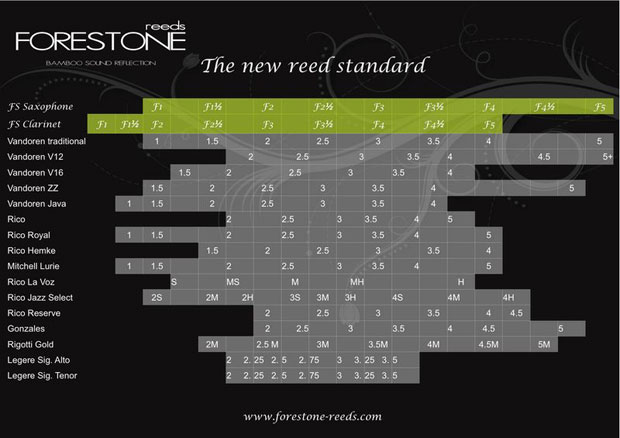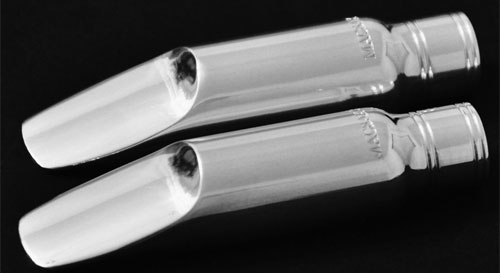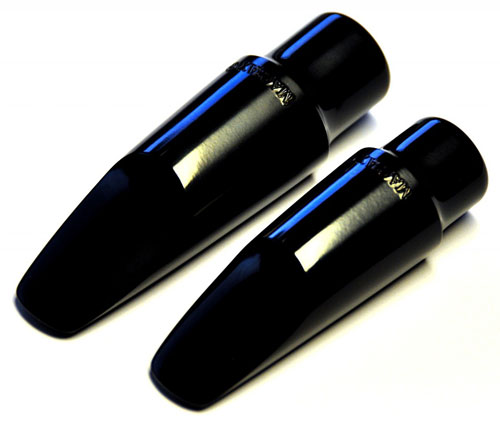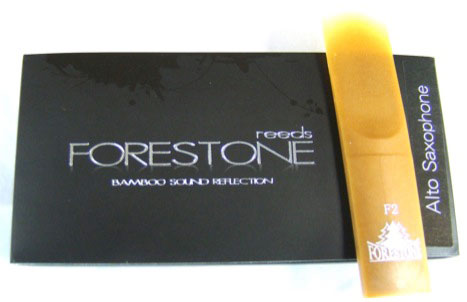Saxophone Mouthpiece and Reed Discoveries from NAMM 2012
While at the NAMM 2012 show I had the opportunity to meet and network with some of the world’s leading musical instrument and accessory manufacturers as well as some of the greatest saxophonists playing today. I was able to speak with established saxophonists such as Bob Reynolds, Greg Osby, and Pete Christlieb as well as new artists such as Adam Larson.
In addition to all of the great events and people at the NAMM show, I was able to test many new saxophone products that I had never seen before. There were so many new products on the market that it would truly take months to figure out which products would work best for me, personally.
In this article, I am going to be reviewing 3 saxophone products that I believe will allow saxophonists to stop fighting the instrument and begin playing it with added ease and freedom.
Forestone Reeds
While at the NAMM show, I passed hundreds of merchants who sold saxophones, mouthpieces, and reeds. What I did not expect is to pass a reed company called Forestone. Forestone has been trying to develop a single reed for over 30 years and has done much research to produce a synthetic reed that has the sound that players look for in cane but without all the drawbacks.
Material
The Forestone reed is made up of a combination of polypropylene resin and cellulose wood fiber. Over 50% of the wood fiber used in this reed is bamboo. This material allows the Forestone reed to be flexible, resilient, and most importantly, produce a clean sound.
Key Benefits
Forestone reeds feature:
- no warping
- no water logging
- no humidity, temperature, or altitude problems
- a much longer life than that of a traditional cane reed
- the ability to be adjusted by clipping or shaving (however, the majority of the time no work needs to be done)
Strength
According to the Forestone website, whatever strength you are playing on a cane reed will be the same strength on a Forestone reed. However, when I was trying out the Forestone reed, I needed to move up one whole strength from my standard size. So if you are using a Rico or Vandoren strength 3 reed, you might prefer a Forestone F4.
Below is a reed-strength chart to help guide you towards the right Forestone reed strength for you:

Overall
After comparing the Forestone reed to my cane reed, I can see why players have started switching as well as using it as a backup reed in case anything were to happen to their cane reed. I decided that the Forestone f4 would be the right reed for me and have been alternating between it and my cane reeds.
I have continued primarily playing my cane reed because I am used to it, but have noticed over the past couple of days that both reeds sound and feel the same. If any saxophone player is tired of the inconsistencies of cane and is ready to try a synthetic reed that truly performs to higher standards, I would recommend Forestone reeds.
For more details, visit http://www.forestone-japan.com or pick up a box and see for youself.
MACSAX FJ III mouthpiece

When I arrived at the NAMM show, I knew I had to stop by and see the great saxophone mouthpiece maker and re-facer Eric Falcon over at the MACSAX booth. Upon arriving at the booth I saw four alto and four tenor saxophones. Each saxophone had its own special finish such as un-lacquered, silver, and gold. What surprised me about each horn was the professional benchmark setup done by Ken Beason, who has setup many professional saxophone players horns including Michael Brecker.
As I was trying the different MACSAX alto and tenor saxophones (which were really great horns, by the way), Eric told me to test out his FJ III metal mouthpiece in a size 7 and 8*. He told me that he based this piece on some of the great vintage mouthpieces from the 50’s ad 60’s, but with an updated chamber design.
Since I have been playing on an old hard rubber Otto Link, I was unsure how I would adjust to the metal mouthpiece. After just playing the FJ III metal mouthpiece 7 tip opening for 15 minutes I noticed that this mouthpiece was one you could really push in terms of playing very loud to playing very soft. Since I am used to playing on a neutral to dark-ish hard rubber mouthpiece, I noticed that the FJ III gave me a brighter, edgier sound that reminded me of a metal Otto Link early Babbitt or an early metal Bob Dukoff Hollywood model.
After trying the 7 tip opening, Eric thought it would be fun to see how I would respond to playing a much larger opening of an 8*. At first, I thought I was not going to get a sound out of it but to my surprise I was able to get a bigger sound. What I did notice though is since I was so used to the 7 tip opening, my sound was more spread on the 8* and more focused on the 7.
In terms of dynamics as well as ease of playing throughout the entire range of the horn, these mouthpieces are incredibly flexible. Each comes with a Rovner Platinum ligature as well as “soundware case” – although the website does not elaborate with a description of the mouthpiece case.
All in all, The MACSAX FJ III metal mouthpiece is another mouthpiece that sax players can add to their list of mouthpieces to try. Another job well done by Eric Falcon!
Here is the link if you want to check out the mouthpieces and horns that MACSAX offers. http://MACSAX.com.
MACSAX D-jazz
While trying out the MACSAX FJ III mouthpieces and horns, Eric told me to try out his MACSAX D-Jazz alto mouthpiece. I have been playing on a standard Meyer 6 mouthpiece for the past 7 years and wanted to see if the MACSAX D mouthpiece gave me a bigger and edgier sound similar to a old NY Meyer or Meyer Bros. NY mouthpiece.
Eric told me the MACSAX D is similar to a vintage Meyer. While trying the MACSAX D-jazz alto mouthpiece, I noticed that this piece had the same free-blowing quality of my Meyer, but the upper register was cleaner. When I was playing from high D to altissimo D, I noticed a bright but focused sound that was easy to keep in tune.
 I really liked this mouthpiece in comparison to my Meyer because it allowed me to produce a bright and edgy tone that was not thin or harsh on the ears. I would have to say that this mouthpiece reminded me of a Jody Jazz hard rubber or an Aizen hard rubber alto mouthpiece. However, this piece gave me a quicker response and more focused tone than either of those two.
I really liked this mouthpiece in comparison to my Meyer because it allowed me to produce a bright and edgy tone that was not thin or harsh on the ears. I would have to say that this mouthpiece reminded me of a Jody Jazz hard rubber or an Aizen hard rubber alto mouthpiece. However, this piece gave me a quicker response and more focused tone than either of those two.
If anyone is searching for an old Meyer, I recommend he or she check out the MACSAX D-Jazz mouthpiece because it will save you a lot of time and money while allowing you the flexibility to play a wide range of musical styles.







January 30, 2012 @ 3:09 pm
Nice report, Zach. I’ll have try one of those bamboo-infiltrated Forestones!
January 30, 2012 @ 4:20 pm
Hey Dave,
Thanks for the compliment. The forestone reed is a great alternative to cane as well as a great back up reed.
March 17, 2012 @ 12:15 am
Thanks for the first hand impressions of Foreststone and Macsax.
Appreciated the reed chart too.
So……anybody playing Forestone here?
May 2, 2012 @ 12:20 am
I agree on your observation regarding Forestone reeds. For me, they have become my main reeds on tenor and baritone, due to their consistency, cane-like response, and longevity.